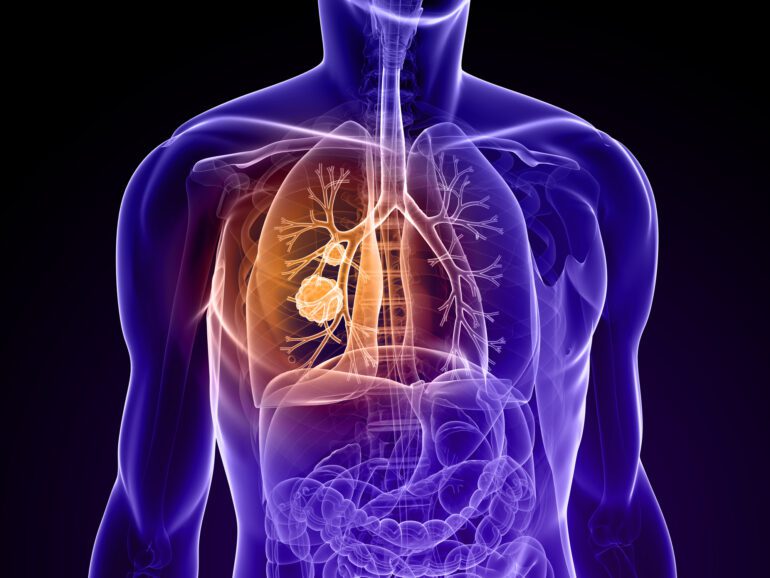TL;DR:
- AI tool identifies high lung cancer risk in non-smokers using chest X-rays.
- Traditional screening guidelines exclude never-smokers, but their risk is rising.
- The “CXR-Lung-Risk” model predicts lung cancer risk from a single chest X-ray.
- 28% of high-risk individuals identified by AI were later diagnosed with lung cancer.
- This AI tool allows for opportunistic screening of high-risk non-smokers.
- Signifies the transformative potential of AI in healthcare.
Main AI News:
In a groundbreaking study set to be presented at the annual meeting of the Radiological Society of North America (RSNA), artificial intelligence (AI) has proven its potential to identify non-smokers at high risk for lung cancer. Lung cancer, the leading cause of cancer-related mortality, has long been associated primarily with smoking, but a significant portion of cases—approximately 10-20%—occurs in individuals who have never smoked or have minimal smoking history. These never-smokers have largely been excluded from conventional lung cancer screening recommendations, but this study could change the landscape of early detection.
The United States Preventive Services Task Force (USPSTF) presently recommends low-dose CT screening for lung cancer in adults aged 50 to 80 with a substantial smoking history, typically defined as at least 20 pack-years and those who either currently smoke or have quit within the past 15 years. However, with lung cancer rates among never-smokers on the rise, there’s an urgent need for more inclusive screening criteria. The challenge lies in accurately predicting lung cancer risk for this specific population, given the absence of traditional risk factors like smoking history.
Researchers from the Cardiovascular Imaging Research Center (CIRC) at Massachusetts General Hospital and Harvard Medical School sought to address this critical gap. They developed a deep learning model known as the “CXR-Lung-Risk” model, leveraging a vast dataset of 147,497 chest X-rays from 40,643 individuals, including both asymptomatic smokers and never-smokers. This AI model was designed to predict lung-related mortality risk based solely on a single chest X-ray image, making it a practical and accessible tool.
The study’s results were nothing short of remarkable. When externally validated in a group of never-smokers who had routine chest X-rays, the deep learning model successfully identified individuals at high risk for lung cancer. Out of the 17,407 patients included in the study, 28% were categorized as high-risk by the AI model, and 2.9% of these high-risk individuals were later diagnosed with lung cancer. This exceeded the 1.3% six-year risk threshold recommended by National Comprehensive Cancer Network guidelines, even after adjusting for other risk factors.
“This AI tool opens the door for opportunistic screening for never-smokers at high risk of lung cancer, using existing chest X-rays in the electronic medical record,” remarked senior author Michael T. Lu, MD, MPH, director of artificial intelligence and co-director of CIRC at MGH. Given the declining rates of cigarette smoking, early detection approaches for non-smokers are becoming increasingly vital.
This groundbreaking research not only holds immense promise for improving the early detection of lung cancer in never-smokers but also highlights the transformative potential of artificial intelligence in revolutionizing healthcare. As the medical community continues to explore AI’s capabilities, we can anticipate more breakthroughs that will reshape the future of medicine and patient care.
Conclusion:
This breakthrough in AI-driven lung cancer risk identification for non-smokers has the potential to revolutionize the healthcare market. Expanding early detection capabilities to a previously underserved population opens up new opportunities for healthcare providers and technology developers to improve patient care and outcomes. This innovation underscores the transformative power of artificial intelligence in shaping the future of medicine and healthcare delivery.

